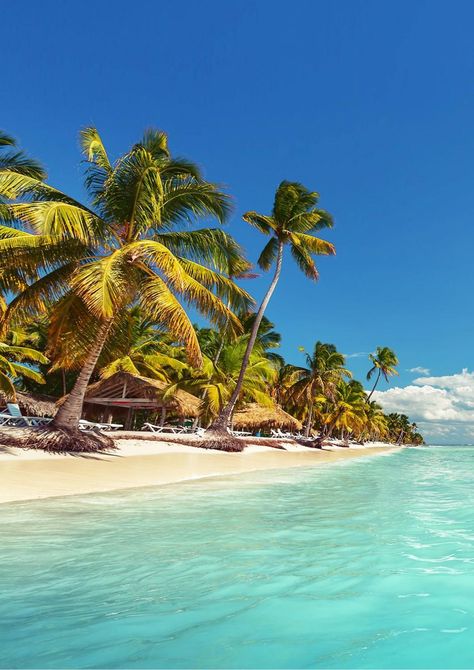
Ireland is an island in the North Atlantic. It is separated from Great Britain to its east by the North Channel, the Irish Sea, and St George’s Channel. Ireland is the second-largest island of the British Isles, the third-largest in Europe, and the twentieth-largest on Earth. The island of Ireland comprises the Republic of Ireland, which is a sovereign country, and Northern Ireland, which is part of the United Kingdom.
The Republic of Ireland endured a hard-fought birth. Ruled from Great Britain since the 13th century, its citizens, many of them suppressed Catholics, struggled to remove themselves from British domination for the next several hundred years.
Facing civil war in Ireland, Britain partitioned the island in 1920, with separate parliaments in the predominantly Protestant northeast and predominantly Catholic south and northwest. However, the republicans opposed the formula, and in 1922 the Irish Free State was formed. Almost immediately, the northeast—Northern Ireland—withdrew and accepted self-governance within the United Kingdom.
5 Best Places to see
1.DUBLIN

Irish Dubh Linn, Norse Dyfflin (“Black Pool”), also called Baile Átha Cliath (“Town of the hurdled ford”), city, capital of Ireland, located on the east coast in the province of Leinster. Situated at the head of Dublin Bay of the Irish Sea, Dublin is the country’s chief port, the center of financial and commercial power, and the seat of culture. It is also a city of contrasts, maintaining an uneasy relationship between reminders of earlier political and economic conditions and symbols of present-day life and prosperity.
.
Dublin is a warm and welcoming city, known for the friendliness of its people and famous for its craic (“crack”)—that mixture of repartee, humor, intelligence, and acerbic and deflating insight that has attracted writers, intellectuals, and visitors for centuries.
While you are in town never leave Dublin without visiting this famous bar, TEMPLE BAR was named after Sir William Temple, a PROVOST, of TRINITY COLLEGE in Dublin who owns a series of property in this area. A place to see and experience the true spirit of Irish culture. Huge stock of Whiskey is always available and one of the largest in the entire world.


2.GALWAY



Me, my husband Larry, and the Galway locals.
Thank you for having us and here’s to you “SLAINTE” from Canada.
is a city in the West of Ireland, in the province of Connacht. It is the county town of County Galway, which is named after it. Is the sixth most populous city in Ireland, with a population at the 2016 Census.
Controlled largely by a group of merchant families, the Tribes of Galway, the city grew into a trading port. Following a period of decline, as of the 21st century, the city is a tourist destination and is known for hosting numerous festivals, celebrations and events, including the Galway Arts Festival.
Galway has the largest Irish- (Gaelic-) speaking population of any Irish county, and the Irish college at Spiddal has facilities for those wishing to study the language. About one-third of the county’s people live in villages and towns, which, apart from the city of Galway, are small.
Galway is known as Ireland’s Cultural Heart (Croí Cultúrtha na hÉireann) and is known for its vibrant lifestyle and numerous festivals, celebrations and events. Every November, Galway hosts the Tulca Festival of Visual Arts as well as numerous festivals.
On 1 December 2014, the Director-General of UNESCO announced the official designation of Galway as a UNESCO City of Film.
In 2007, Galway was named as one of the eight “sexiest cities” in the world.
Since the 1985 launch of the EU’s European Capital of Culture (ECOC) initiative, more than fifty cities have been given the title and the opportunity to have a spotlight shone on their individual cultural history and collective European identity through a year-long program of events.
In 2020, Galway will become the third Irish city to hold the designation, after Dublin in 1991 and Cork in 2005.
Here we are with the locals having Beer night, music, food, laughter, and fun. There was never a dull moment.
Galway, THANK YOU FOR HAVING US! How I wish I can say it in Gaelic.
But here’s to you, CHEERS, “Sláinte” means “health”, and if you’re feeling brave, you can say sláinte is táinte (“slawn-che iss toin-che”), meaning “health and wealth”.
3.BELFAST

Belfast, Irish Béal Feirste, city, district, and capital of Northern Ireland, on the River Lagan, at its entrance to Belfast Lough (inlet of the sea). It became a city by royal charter in 1888. After the passing of the Government of Ireland Act, 1920, it became the seat of the government of Northern Ireland. Home With over 40 castles to see in Northern Ireland, we have picked out the best ones – From medieval ruins to Game of Thrones film locations and a working Royal residence, there’s a castle for everyone to enjoy exploring as they step back into times gone past.
Belfast suffered greatly during the violence that accompanied the partition of Ireland. But by the early 19th century, Belfast became a major port. It played an important role in the Industrial Revolution in Ireland, becoming briefly the biggest linen-producer in the world, earning it the nickname “Linenopolis“.[8] By the time it was granted city status in 1888, it was a major centre of Irish linen production,
Belfast is Northern Ireland’s capital. It was the birthplace of the RMS TITANIC, which famously struck an iceberg and sunk in 1912. This legacy is recalled in the renovated dockyards’ Titanic Quarter, which includes the Titanic Belfast, an aluminium-clad museum reminiscent of a ship’s hull, as well as shipbuilder Harland & Wolff’s Drawing Offices and the Titanic Slipways, which now host open-air concerts.
3.TITANIC MUSEUM



The museum opened in 2012 a monument to Belfast‘s maritime heritage on the site of the former Harland & Wolff shipyard in the city’s Titanic Quarter where the RMS Titanic was built. It tells the stories of the Titanic, which hit an iceberg and sank during her maiden voyage in 1912, and her sister ships RMS Olympic and HMHS Britannic.
RMS Titanic was a British passenger liner operated by the White Star Line that sank in the North Atlantic Ocean on 15 April 1912, after striking an iceberg during her maiden voyage from Southampton to New York City. Of the estimated 2,224 passengers and crew aboard, more than 1,500 died, making the sinking at the time the deadliest of a single ship in the West and the deadliest peacetime sinking of a superliner or cruise ship to date.
Many proposed to raise Titanic using half a million tons of liquid nitrogen to encase it in an iceberg that would float to the surface. the wreck is too fragile to be raised and is now protected by UNESCO.
During that time a lack of submarine technology at the time as well as the outbreak of World War I also put off such a project to raise Titanic, and this was followed by a lack of funding. But in most cases a lack of understanding of the physical conditions at the wreck site was the biggest factor. Oceanographers finally gave up to salvage the boat from her resting place.
4.CARRICK-A-REDE ROPE BRIDGE

The Carrick-a-Rede Rope Bridge is a rope bridge near Ballintoy in County Antrim, Northern Ireland. The bridge links the mainland to the tiny island of Carrickarede. It spans 20 metres and is 30 metres above the rocks below. The bridge is mainly a tourist attraction and is owned and maintained by the National Trust.
Carrickarede island is the best example of a volcanic plug in Northern Ireland. In the 1970s it had only one handrail and large gaps between the slats. In 2000 they created a new bridge built with the help of local climbers. There were times that visitors could not walk back to the main Island and have to be taken off the island by boat.
In 2017 during an inspection, the structural ropes had been vandalized overnight. The bridge was closed by National Trust to re-assess the bridge and hired experts to repair the structural ropes. In a week’s time, the bridge was once again open to the public.
Must have comfortable shoes for a long walk, but the adventure is worth it.
5. Giant Causeway


” The Chimney Stacks.”
How do you explain this? This is a work of ART.
Irish Clochán an Aifir, a promontory of basalt columns along 4 miles (6 km) of the northern coast of Northern Ireland. It lies on the edge of the Antrim plateau between Causeway Head and Benbane Head, some 25 miles (40 km) northeast of Londonderry.
There are approximately 40,000 of these stone pillars, each typically with five to seven irregular sides, jutting out of the cliff faces as if they were steps creeping into the sea. Formed 50 to 60 million years ago, during the Paleogene Period, the Giant’s Causeway resulted from successive flows of lava inching toward the coast.
It was declared a World Heritage Site by UNESCO in 1986 and a national nature reserve in 1987 by the Department of the Environment for Northern Ireland.
If you look closely behind me that the rocks are in the form of hexagonal. Some with four, five sides, and more. As tall as 12 meters high and the solidified lava in the cliffs is 28 meters (92 ft) thick in places.
There is a lot of rock formations that no one can explain how it was formed. You just have to come and see it for yourself.
Do you see what nature can do?

